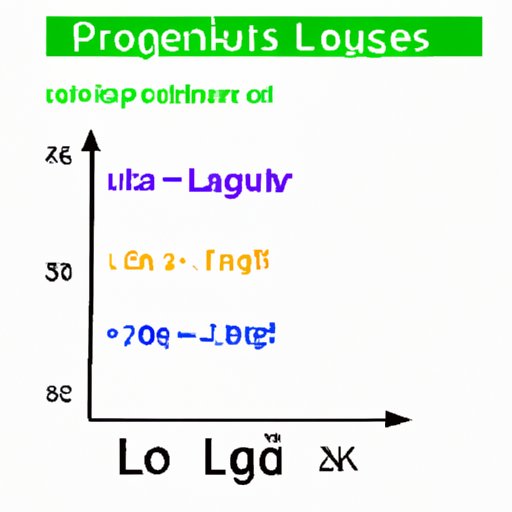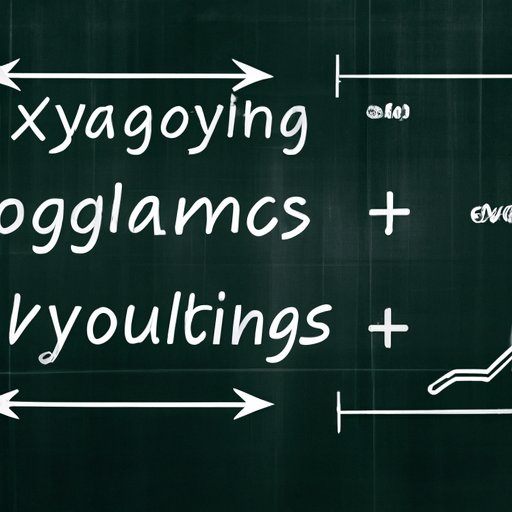
Introduction
Logarithmic expansion is a fundamental concept that is used in various mathematical and scientific fields. The ability to expand logarithmic expressions is essential for solving complex equations and simplifying mathematical expressions. This article will explore the properties of logarithms that are necessary for expanding expressions and provide a step-by-step explanation of how to use them.
Unlocking the Power of Logarithms: A Simple Guide to Expanding Properties
Before we delve into the art of expanding logarithmic expressions, it is essential to understand the fundamental principles of logarithms. A logarithm is the inverse of an exponential function that helps us find the exponent that a base needs to be raised to produce a specific value. The concept of logarithmic expansion involves simplifying or expanding logarithmic expressions by using their properties.
The basic properties of logarithms that are used for expansion include:
- The Power Rule: logb(xy) = logbx + logby
- The Product Rule: logb(x/y) = logbx – logby
- The Change of Base Rule: logbx = logax / logab
Let’s take a look at some simple examples of using these properties to expand logarithmic expressions. Suppose we have an expression of log2(16x). Using the power rule, we can split the expression as log216 + log2x = 4 + log2x. Similarly, using the product rule, we can expand an expression of log3(p/q) as log3p – log3q. Using these properties enables us to simplify complex logarithmic expressions and perform mathematical operations with ease.
From Simple to Complex: Using Properties of Logarithms to Expand with Ease
As we move on to more complicated logarithmic expressions, we can use the same properties to expand them. To expand an expression with a coefficient, we can use the power rule by placing the coefficient as the exponent of the base. For instance, given an expression of 3log5(x), we can re-write it as log5(x3). To expand an expression with an exponent, we can use the power rule as well to multiply the exponent by the logarithm. For example, given an expression of log2(x4), we can expand it to 4log2x.
In addition, we may encounter logarithmic expressions that involve both addition and subtraction. To expand these types of expressions, we need to combine like terms and simplify the expression by applying the appropriate property. Suppose we have an expression of log6(x) + log6(y) – log6(z), using the product and quotient rules, we can re-write it as log6((xy) / z).
Mastering Logarithmic Expansion: Tips and Tricks for Applying Properties
To expand logarithmic expressions correctly, it is vital to know which properties to use in different situations. One of the best ways to do so is to familiarize ourselves with the properties and practice using them frequently. However, it is not enough to expand an expression only. We also need to simplify the expressions and avoid common mistakes like dividing instead of subtracting or applying the wrong rule.
To simplify logarithmic expressions, we need to look for common factors and find the simplest form of the expression. If we have an expression of log3(27) – log3(9), we can simplify it by applying the quotient rule to get log3(27/9) = log3(3).
The most common mistake made by learners is dividing instead of subtracting when using the product and quotient rules. To overcome this mistake, it is crucial to double-check the re-written expression before proceeding with any further calculations. Another common mistake is to forget to apply the appropriate rule for expanding the expression, which can lead to incorrect solutions. To avoid this mistake, we need to ensure that we are using the correct rule for each logarithmic expression.
Why Properties of Logarithms Matter: Exploring Expansion in Detail
Logarithms have various applications in science and engineering, the most common of which is the concept of decibels in acoustics and electronics. Using properties of logarithms is essential because they enable us to simplify complex expressions, solve difficult equations, and perform mathematical operations with ease. It is also through the properties of logarithms that we can connect logarithmic and exponential functions. In mathematical terms, the function y = ax and y = logax are inverse functions. Therefore, understanding the properties of logarithms is fundamental to understanding these relationships and simplifying expressions.
Expanding Logarithms with Confidence: A Beginner’s Guide to Properties
Expanding logarithms can be intimidating for beginners, but with practice, confidence can be developed. One of the most common questions learners ask about logarithmic expansion is when to use which property. The answer to this question lies in the expression we are given. For example, when we encounter an expression of log2(16x2), we can apply the power rule because both the coefficient and exponent involve the logarithmic base of 2.
Another hurdle that beginners face is working with negative and fractional exponents. In such cases, we need to apply logarithmic rules to determine the value of the expression and use properties of logarithms to expand it. For example, given the expression of log2(1/8), we can use the change of base rule to expand it as log2(2-3) = -3.
The best way to approach logarithmic expressions with confidence is to break them down into smaller, manageable parts and use the appropriate properties to expand and simplify them. To gain mastery, it is essential to practice regularly and learn from mistakes.
The Art of Logarithmic Expansion: How to Use Properties for Better Results
Using properties of logarithms can lead to more accurate mathematical solutions in various real-world applications. One of the most common applications is in sound engineering and electronics, for instance, when calculating the sound or signal intensity. Another example is in measuring pH levels in chemistry, where logarithmic functions are commonly used. By mastering the properties of logarithms, learners can make these calculations with greater precision and efficiency.
There are many additional resources available for learners to practice and gain mastery of logarithmic properties. Some of the best resources include websites and software that offer extensive practice problems and interactive tutorials. By taking advantage of these resources, learners can further enhance their understanding of logarithmic expansion and become confident problem solvers.

Expanding Your Math Skills: Applying Properties of Logarithms to Expand Effortlessly
In conclusion, the properties of logarithms are vital for expanding logarithmic expressions, solving complex equations, and simplifying mathematical expressions. By understanding and using the properties of logarithms, learners can become proficient in math and the sciences. With practice and experience, learners can develop confidence in expanding logarithmic expressions effortlessly and applying them in real-world situations.




